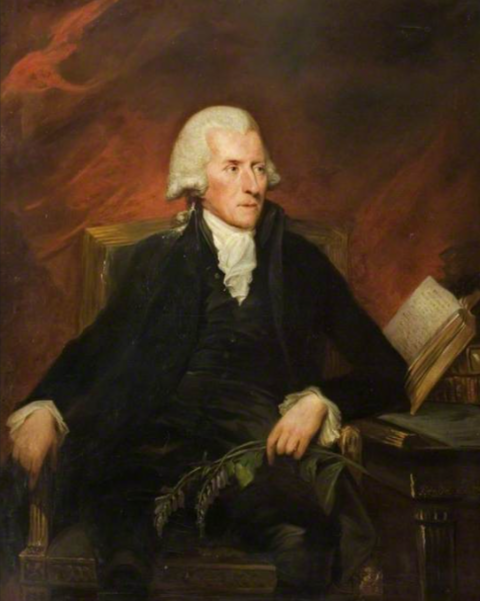


The last quarter of the eighteenth century substantially altered the complexion of the planet; the Yanks prevailed over the Brits under George Washington in the Battle of Princeton and the subsequent birth of the most powerful nation on Earth (January 1777). The Brits, however, 2 decades earlier had overcome Siraj-ud-Daulah in the Battle of Palashi (Plassey) to herald British imperialism over the Indian subcontinent,(courtesy the treachery of Mir JAfar). It istill unclear whether Robert Clive bribed Mir Jafar to betray the Nawab of Bengal or Mir Jafar enticed Clive with a pay off to attack the Nawab with the assurance of deception in the heat of battle; anyway this classic non-military maneuver would be employed repeatedly by the English as they overran an ancient but corrupt civilization. The historic betrayal by Mir Jafar (not the first or last by an Indian) took place in June 1757.
During these tectonic shifts a botanist, chemist, geologist and physician was treating patients heart failure with extracts from leaves of the foxglove plant. A woman had revealed to William Withering the salutatory properties of the foxglove plant and he published a paper on the medical uses of the foxglove after treating almost a hundred patients of heart failure in 1785. The drug later became to be called digitalis after the Latin name ‘digitalis purpurae’.
Withering was to write, “In the year 1775 my opinion was asked concerning a family receipt for the cure of dropsy (edema). I was told that it had long been kept a secret by an old woman in Shropshire, who had sometimes made cures after the more regular practitioners had failed. I was informed also, that the effects produced were violent vomiting and purging; for the diuretic effects seemed to have been overlooked. This medicine was composed of 20 or more different herbs; but it was not very difficult for one conversant in these subjects, to perceive, that the active herb could be no other than the Foxglove.”
William Withering, an astonishingly astute physician, was also a rigorous researcher who confessed, “In spite of my opinion, prejudice or error, time will fix the real value upon the discovery and determine whether I have imposed upon myself and others or contributed to the benefit of science and mankind.” Bill Withering would have been tickled pink had he known that after 225 years since he wrote his paper medical journals would still be demanding more research on digitalis.
The European Heart Journal has published a review and meta-analysis this month (May, 2015) on digitalis associated mortality when used for atrial fibrillation (AF) or in patients with congestive heart failure (CHF). The paper examined 9 studies on AF, 7 with CHF, and 3 with both conditions together (a total of 326,426 patients were studied). Digitalis was associated with a 29% increase in deaths (when compared to placebo ) in 235,047 patients with AF. Digitalis also increased mortality by 14% in CHF patients. The authors of this review rightly concluded that there is need for randomized trials of dose adjusted digitalis treatment for AF and CHF patients in current settings.
Despite being used for more than 2 centuries, digitalis or digoxin has not been as rigorously studied as other current cardiovascular drugs. There is not one randomized study of digitalis in AF patients and only one randomized study in CHF (DIG). The Digitalis Investigation Group (DIG) assessed mortality in patients of CHF in sinus rhythm and recorded reduced hospitalization with digoxin but no lowering of mortality, after a mean follow up of 37 months in 3403 patients. A retrospective analysis of the DIG trial showed that when digoxin levels were high (>1.2 ng/ml) there was significantly higher number of deaths; but at lower plasma levels there was clinical benefit.
The reasons for increased mortality in patients with AF is still unclear; possible mechanisms suggested are reduced AV-node conduction, increase in vagal tone and shortened atrial refractory periods. Digoxin has been noted to double AF relapses post cardiovesion. Digoxin is also well known to provoke ventricular tachycardia including fascicular or bidirectional ventricular tachycardia, and also induce high degree AV block in the presence of electrolyte disturbance. These pro-arrhythmic effects can be amplified by drug interactions with amiodarone or quinidine. There were 13 deaths in a study using dronedarone for AF; all 13 deaths occurred in the dronedarone cohort; 11 of these 13 patients were also on digoxin.
The Lancet too had published a study assessing efficacy of digoxin in March this year; of the 14,171 patients of ROCKET-AF trial, 37% were treated with digoxin. Digoxin was not found to increase stroke or bleeding, but significantly raised mortality by 17%. The hazard was present in patients with or without heart failure. Digoxin therefore should be the last resort drug for lowering heart rate in patients with AF.
And how does digoxin work? Digoxin inhibits the sodium-potassium pump; the inhibition promotes sodium-calcium exchange, which increases calcium content in myocardial cells producing stronger contractions. In patients with systolic heart failure digoxin increases cardiac contraction and left ventricle ejection fraction, reduces capillary wedge pressure, and increases cardiac output, both at rest and exercise. However when contemporary medicines like diuretics and vasodilators have already been administered, there is no further hemodynamic improvement with digoxin.
Digoxin regardless of the indication must be used at a small dose of 125 micrograms a day; it should be avoided or used with extreme caution in the very elderly, in patients with conduction disturbances, renal failure and acute coronary syndromes. Digoxin mandates close monitoring because of its extremely narrow therapeutic/toxicity ratio; and ideally should always only be used as adjunctive therapy. In fact the safest situation to prescribe digoxin is when one has no option; but such a scenario is unlikely to arise; and is largely hypothetical. But these precautions with digoxin do not in any way take away the remarkable scientific achievements of Sir William Withering; moreover many physicians still continue to use digoxin because of its low cost; and decades of clinical experience in patients of rheumatic heart disease with valvular AF.